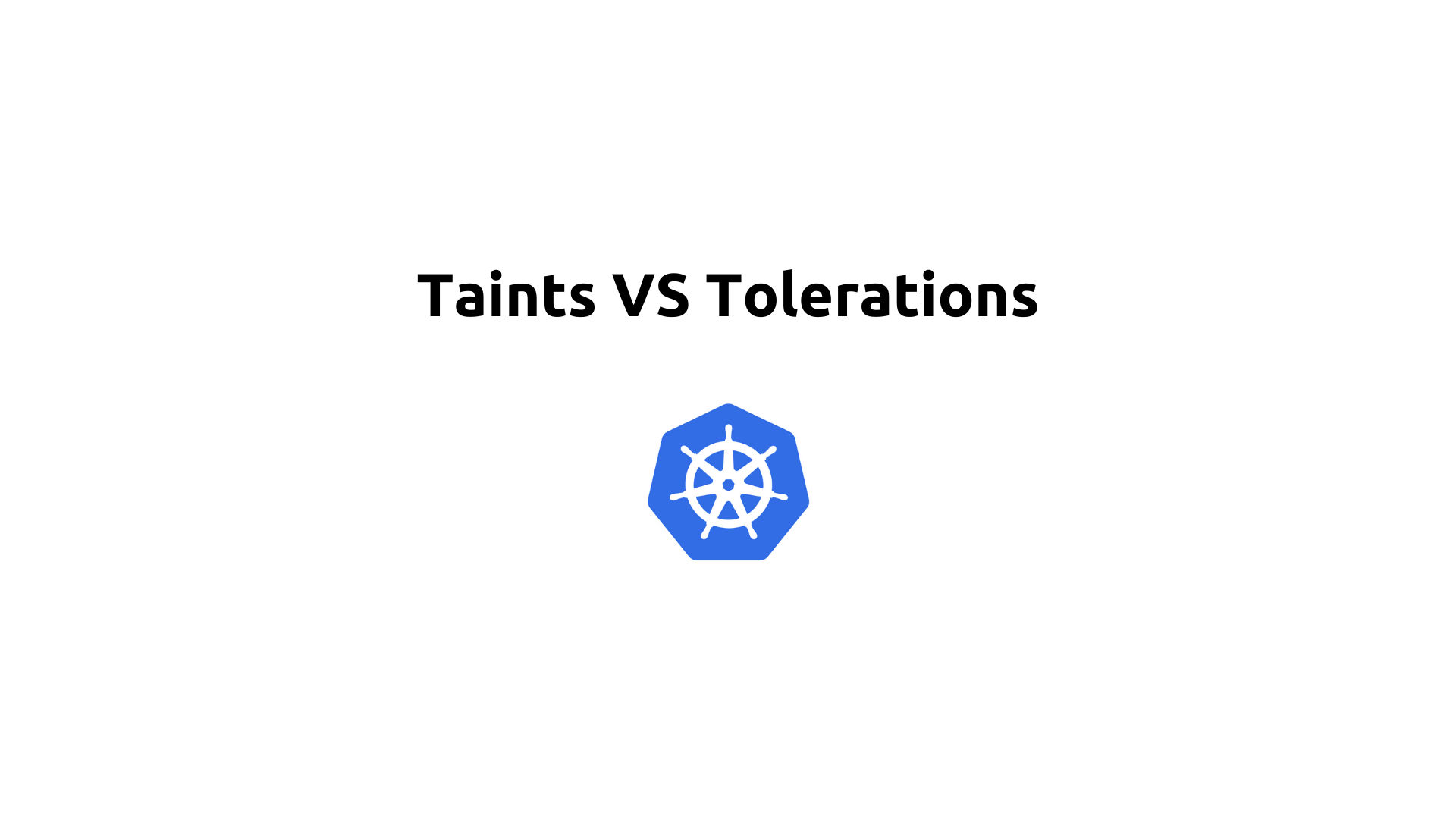Taints VS Tolerations in Kubernetes
 Saurabh Adhau
Saurabh AdhauTable of contents

Introduction
In Kubernetes, taints and tolerations are mechanisms used to control which pods can be scheduled onto which nodes. They play a critical role in influencing the scheduling decisions made by the Kubernetes scheduler, allowing administrators to specify preferences and constraints for workload placement within the cluster.
Taints
Taints are applied to nodes, and they repel (or "taint") nodes so that pods without matching tolerations are not scheduled onto them. Taints are useful for designating nodes for specific workloads or preventing general-purpose nodes from running specialized pods.
How to Apply a Taint to a Node
To apply a taint to a node, you specify the key, value, and effect of the taint. The effect can be one of the following:
NoSchedule: Pods without matching toleration are not scheduled onto the node.
PreferNoSchedule: Kubernetes tries to avoid placing pods without matching toleration onto the node, but it is not guaranteed.
NoExecute: Existing pods on the node that do not tolerate the taint are evicted (deleted) if they do not tolerate the taint.
Here's an example of applying a taint to a node:
kubectl taint nodes <node-name> key=value:effect
kubectl taint nodes node1 app=blue:NoSchedule
This command applies a taint with a key app, value blue, and effect NoSchedule to node1.
Tolerations
Tolerations are applied to pods and allow them to tolerate (or "ignore") the taints on nodes. Pods with matching tolerations can be scheduled onto nodes that have the corresponding taints. Tolerations are defined in the pod specification.
How to Define a Toleration in a Pod
To define a toleration, you specify the key, value (optional), effect, and optional tolerationSeconds (grace period). Here's an example of defining a toleration:
spec:
containers:
- name: my-pod
image: nginx
tolerations:
- key: "app"
operator: "Equal"
value: "blue"
effect: "NoSchedule"
In this example, the pod my-pod tolerates the taint with key app, value blue, and effect NoSchedule. Therefore, it can be scheduled onto nodes that have this specific taint.
Use Cases for Taints and Tolerations
Dedicated Nodes: Taint nodes to reserve them for specific types of workloads, such as databases or GPU-intensive tasks.
Node Maintenance: Use
NoExecutetaints during node maintenance to ensure pods are gracefully evicted before maintenance begins.Specialized Hardware: Taint nodes with specialized hardware (e.g., GPUs) so that only pods that require such resources are scheduled onto those nodes.
Benefits of Taints and Tolerations
Resource Segregation: Taints allow for better segregation of resources, ensuring that nodes are used efficiently based on workload requirements.
Improved Stability: Tolerations enable pods to gracefully handle node maintenance or other disruptive events without affecting overall cluster stability.
Flexibility: Provides flexibility in workload scheduling, allowing administrators to tailor node assignments based on application-specific needs and infrastructure capabilities.
Conclusion
Taints and tolerations in Kubernetes offer powerful mechanisms for controlling pod placement and resource allocation within a cluster. By strategically applying taints and defining tolerations, administrators can optimize workload distribution, enhance resource utilization, and improve the overall resilience and reliability of their Kubernetes environments. These features are essential for managing diverse workloads, ensuring performance requirements are met, and maintaining operational efficiency across large-scale Kubernetes deployments.
Subscribe to my newsletter
Read articles from Saurabh Adhau directly inside your inbox. Subscribe to the newsletter, and don't miss out.
Written by

Saurabh Adhau
Saurabh Adhau
As a DevOps Engineer, I thrive in the cloud and command a vast arsenal of tools and technologies: ☁️ AWS and Azure Cloud: Where the sky is the limit, I ensure applications soar. 🔨 DevOps Toolbelt: Git, GitHub, GitLab – I master them all for smooth development workflows. 🧱 Infrastructure as Code: Terraform and Ansible sculpt infrastructure like a masterpiece. 🐳 Containerization: With Docker, I package applications for effortless deployment. 🚀 Orchestration: Kubernetes conducts my application symphonies. 🌐 Web Servers: Nginx and Apache, my trusted gatekeepers of the web.